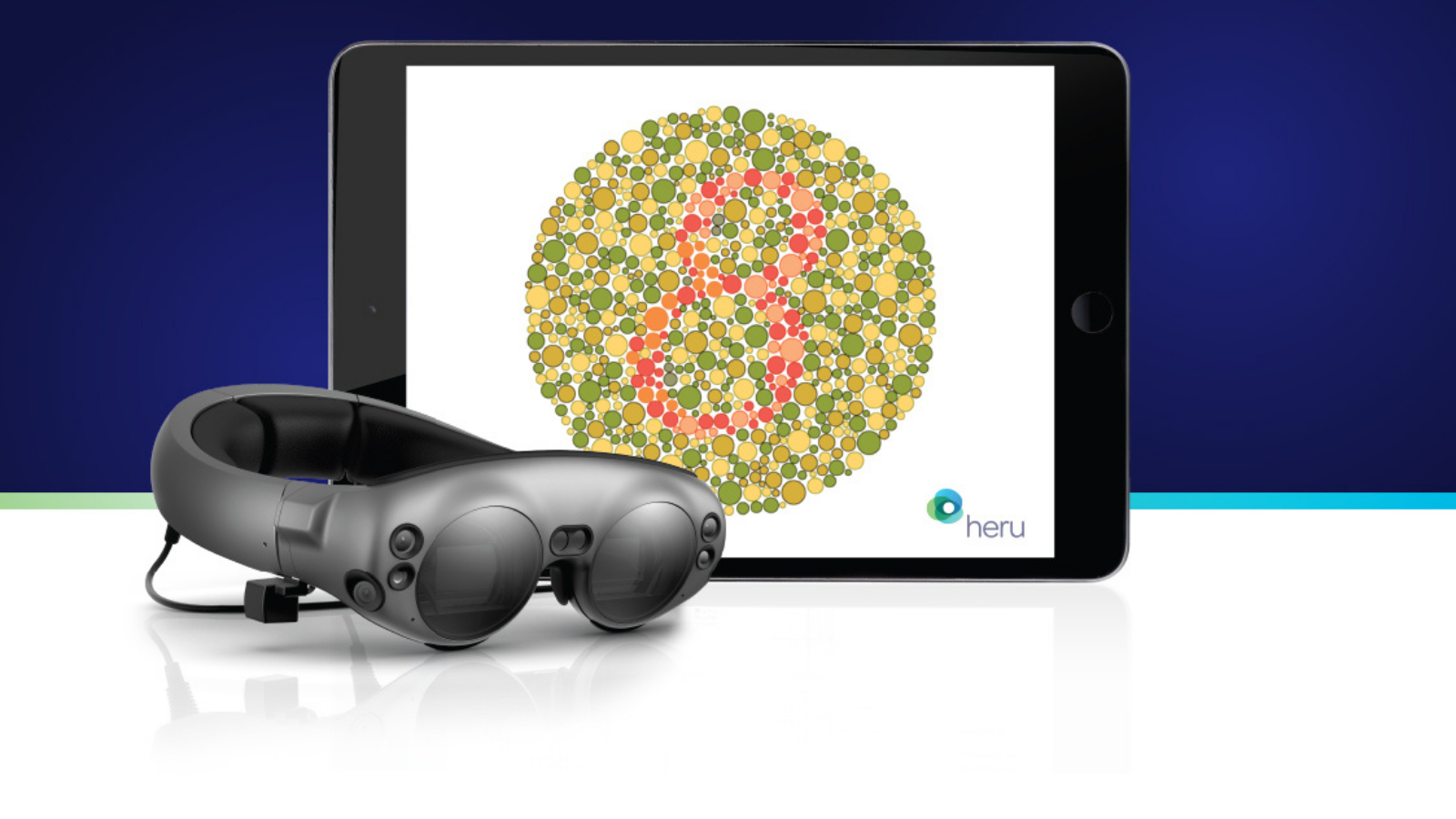Digital color vision testing using a wearable AR/VR device solves challenges of traditional color vision exams — eliminating paper charts and plates testing inconsistencies.
Color vision tests are routinely administered in clinic to screen for congenital color vision deficiency (CVD). Caused by an X chromosome mutation, congenital color vision deficiencies overwhelmingly affect males, impacting 1 in 12 men.1
Printed pseudoisochromatic plates such as the Ishihara and Hardy-Rand-Rittler tests are commonly used to detect and classify the different types of color vision deficiencies: protan, deutan and tritan defects.
While screening may be routine for the congenital form of color vision deficiency, it is important to remember that color vision testing also plays an essential role in detecting and classifying acquired color vision deficiency, as the result of a systemic or ocular disease or the side effect of certain medications.
Make annual exams comprehensive with color vision testing.
When performing an annual eye exam, color vision testing may not be top of mind, but it is important to evaluate, especially for older patients who may be at risk for acquired color vision deficiency from a range of conditions, including diabetes, glaucoma, macular degeneration, Alzheimer’s disease, Parkinson’s disease, leukemia, sickle cell anemia, and chronic alcoholism. 2
Studies have shown that color vision testing may also assist in early detection of a range of conditions that include optic neuropathy, multiple sclerosis and Duchenne muscular dystrophy.3 Screening patients annually can be invaluable for identifying and monitoring disease progression, as well as management.
In addition, numerous medications contribute to color vision loss, including Lanoxin, Hydroxychloroquine, Sildenafil, and Tamoxifen, often prescribed to older Americans.4
With nearly 70% of Americans ages 40-79 reporting taking at least one prescription drug in the past 30 days5, it’s important to ask older patients about their medication use as part of the annual exam. If you believe a color vision deficiency could be caused by a medication, this will enable you to communicate with the prescribing physician to determine if a medication or dosage change is warranted.
Ready to test? Testing with printed color plates can be challenging.
While using the printed color plate test is straightforward, ensuring proper illumination is more complicated. It is recommended that testing be done under Standard Illuminant C to prevent incorrect results.
Even with computer- or tablet-based color vision tests, controlling ambient lighting is still essential since its color and brightness can negatively impact a test used to determine how well patients can discriminate small changes in color.
In addition, the printed tests come with cautions to avoid placing the plates in direct sunlight, which can cause colors to fade over time, and touching the paper, as oils on the finger can alter the colors.
Heru’s Wearable Color Vision Testing is a fast, efficient way to detect and classify CVD.
Heru developed a new Digital Color Vision Test to eliminate those concerns with a wearable platform that controls both the background illumination and the ambient light, ensuring proper testing conditions to maximize clinical accuracy.
Using the same 12 numbered plates as the Ishihara test, the patient-guided test eliminates operator error. Patients use a pointer to select the number they see. The new test will also allow you to perform the Farnsworth D-15 Extended Color Vision test. Used to determine the classification and severity of the patient’s color deficiency, the Farnsworth D-15 Extended Color Vision exam (CPT 92283) has a national reimbursement average of $55.02, with many supported ICD-10 codes.6
Digital Color Vision Testing joins Heru’s suite of diagnostic exams, using the same lightweight and portable platform. That makes it easy to include an annual color vision test to ensure a comprehensive picture of your patients’ overall visual function.
Michael Chen, OD, joined Heru in 2021 as the Sr. Director of Clinical Affairs.
1. Colour Blind Awareness. www.colourblindawareness.org. 1/22.
2. What Is Color Blindness? www.aao.org/eye-health/diseases/what-is-color-blindness. 1/22.
3. Color Me Curious: Did you know that color vision testing has the potential not only to uncover optic neuropathy, but also glaucoma? Article in Review Of Optometry; February 15, 2013.
4. Drug-Induced Deficits in Color Perception: Implications for Vision Rehabilitation Professionals Article in Journal of Visual Impairment & Blindness; November 2016.
5. Prescription Drug Use Among Adults Aged 40–79 in the United States and Canada. www.cdc.gov/nchs/products/databriefs/db347.htm.
6. www.cms.gov. 1/22.

